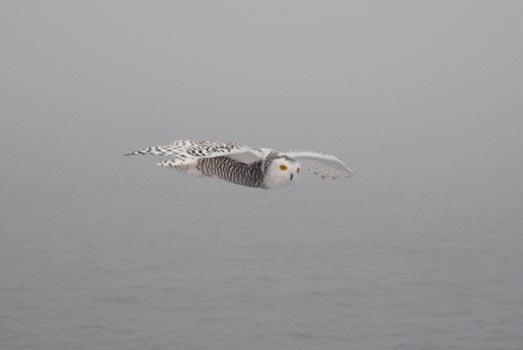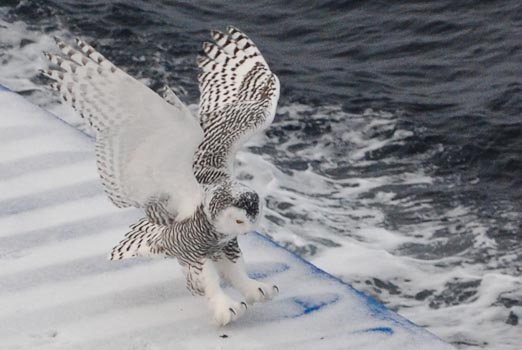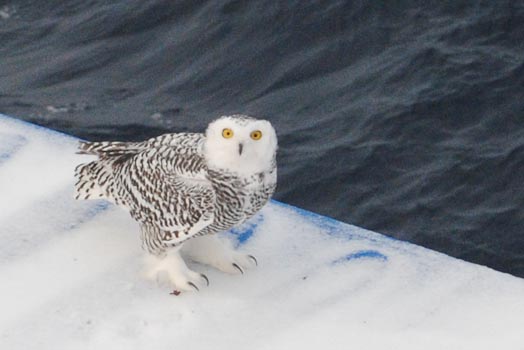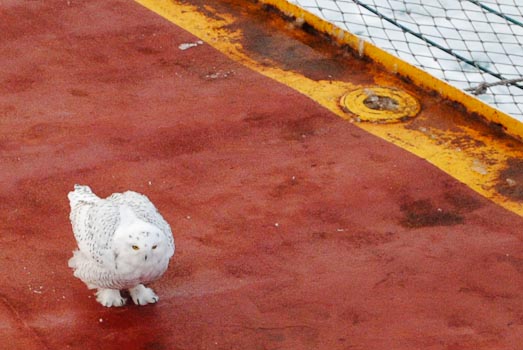Alex KainOctober 12, 2009At approximately 71° N, 132° W, the CCGS Louis S. St-Laurent left the ice cover of the Beaufort Sea and entered an endless view of deep blue open water. On the deck, the common sounds of ice crashing against the hull gave way to a more peaceful soundscape: the sloshing of water, the humming of the engine, the sweep of wind across the deck. In this tranquil seaborne din, the intercom of the Louis piped with a surprise announcement. Attention all crewmembers, attention all crewmembers. Two Snowy Owls have been spotted on the port side of the ship. Work and conversations came to an immediate halt. Few birds have been spotted throughout the expedition, and those that have been observed were mostly common Black-legged Kittiwakes, a species known to winter on the Beaufort Sea. Snowy Owls roost in the tundra. They feed primarily on small land-dwelling rodents like lemmings and voles. When wintering, the birds frequent wind-swept landscapes with little snowfall. Thus, their presence 120 nautical miles from the closest coastline came completely unexpected.
One male and one female flew alongside the ship. The male Snowy Owl appeared almost entirely white, while black streaked the female's plumage. The birds' behavior suggested they had been flying without a chance to rest for quite some time. They circled the ship and surveyed safe landing areas. Owl observers on deck moved to the starboard side of the ship to provide an open, undisturbed area for landing. The birds appeared disoriented and tired. When the male landed on the helicopter deck, he remained still and occasionally ruffled his feathers. He rotated his head all around with intense eyes, presumably looking for his mate, who was nowhere to be seen.
If owls seldom go out to sea and they weren't delivering messages to wizard oceanographers predestined for Hogwarts, then what were they doing over one-hundred miles away from the nearest plot of land? The sheer distance of their journey suggests additional forces sent them so far away. The trip was not deliberate. The most likely cause of their forced migration was a violent windstorm that powered through the Kugluktuk region earlier this week. Winds of up to 70 kilometers per hour could have easily sent the helpless birds to sea. As one shipboard biologist hypothesized, once out of sight of the shoreline with only the sun, moon, and stars to use for navigation, the birds became disoriented and couldn't find a path back to land. For the birds, their respite aboard the Louis was much needed. For the humans on board, their presence reminded everyone of the Arctic's biological beauty and mystery. All text and photos property of Alex Kain. Last updated: October 7, 2019 | |||||||||||||||||||||||
Copyright ©2007 Woods Hole Oceanographic Institution, All Rights Reserved, Privacy Policy. | |||||||||||||||||||||||






